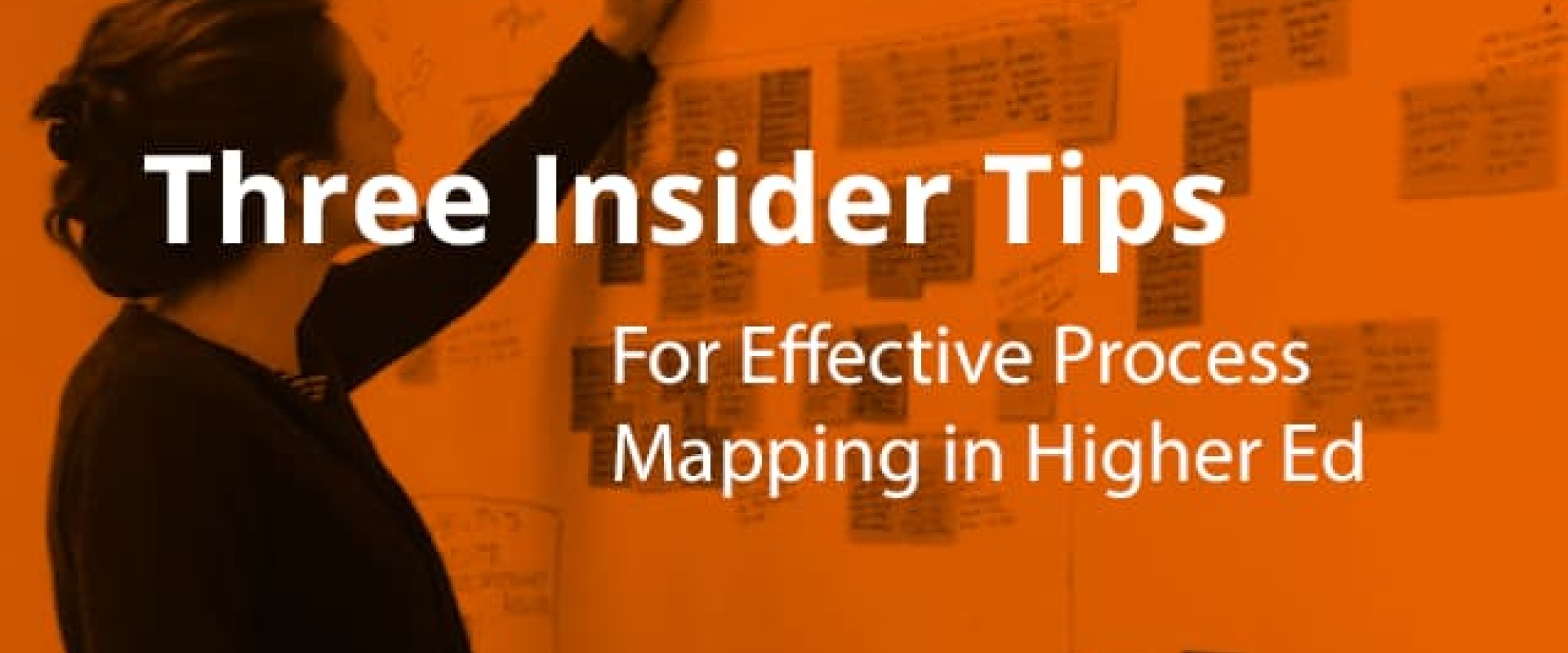Our advisors had a problem. They had millions of data points—grades, test scores, and more—at their fingertips but no time to figure out how to use them to help their students. Applied at just the right time, this data could be used to proactively reach out to students to avoid common issues and resolve minor mixups before they became major barriers. However, advisors were too busy addressing current problems to try to prevent new ones. It was a messy, complex situation but one particularly suited to process mapping.
With roots in industrial engineering, process mapping involves creating visual workflow diagrams to map out a current situation. By analyzing the current map, the team determines where improvements can be made to streamline or rework the process.
After learning how my colleagues at Michigan State and Georgia State successfully used these techniques to redesign experiences for students, I couldn’t wait to learn process mapping myself. Along with several of the UIA Fellows, I received training. We then began leading teams to redesign processes that trip students up such as transfer credit articulation at Purdue and registration holds at Arizona State.
A process mapping session in action
At Oregon State University, I worked with a small group of academic advisors and advising managers to identify over 30 opportunities for proactive outreach. While doing this work, I noticed that three strategies were particularly effective for tackling the daunting task of redesigning processes.
Design the meeting environment to encourage collaboration and creative thinking.
I paid particular attention to developing a welcoming, collaborative atmosphere for our work sessions. This included setting up the room with chairs around big central table, placing supplies like markers, paper, and post-it notes within arm’s reach of everyone, and having healthy snacks and water available in the room. When one participant exclaimed, “Oh, I love post-its!” upon entering the room, I knew we had set the right tone. This also extended to the meeting agenda, which incorporated meaningful introductions, alternating group and individual work, and breaks at regular intervals. The key here was to continuously signal that this was not a standard meeting. Rather than listen and report, we were going to create something new together.
Involve a small team with deep understanding of the process.
Oregon State University process mapping team.
We selected the group of six academic advisors and advising managers to represent a variety of academic colleges, experience levels, and university roles. While this variety of perspectives was valuable, it was even more important as the work progressed that the participants all had first-hand academic advising experience. When building a small team for a project or task force in higher education, we often include administrators since they can represent a broader group of offices or employees. However, for process mapping, deep knowledge of processes is necessary for successful results. Since we were designing a new process for advisors, it was critical the mapping be done by advisors.
Allow the project to evolve as unanticipated needs emerge.
When we presented an early draft, advisors asked if it could be customized to specific student populations. We hadn't set out to come up with such an in-depth, comprehensive resource, but when we saw how excited advisors were, we decided to accommodate the request and develop a more comprehensive toolkit. Although it's always good to be wary about scope creep on projects, we felt that the needs identified by these advisors would have a significant effect on their ability to adopt and incorporate the recommendations in their day-to-day advising practice. Staying open to their feedback and letting it shift our workflow made the outcome more practical, helpful, and impactful.
As advisors begin to use the Proactive Advising Toolkit, it's exciting to see results start to take shape. One team of advisors identified and reached out to 55 first-year engineering students who did not register for the next term. Now 71% of those students are enrolled and continuing their education. Small wins like this can add up to big differences for student success – especially for new students, international students, and first-generation college students who often experience difficulty navigating our educational institutions. Since getting started with process mapping, I see possibilities everywhere for processes in need of improvement, whether it’s how we onboard new transfer students or the queue at our campus sandwich shop. I’m excited to keep working with teams to reduce barriers to student success and to share widely how process mapping can be used to redesign our campuses to better support students.
You can view and download the full Oregon State University Proactive Advising Toolkit here. Feel free to share or adapt these materials, but please credit the source. The Oregon State team put in a lot of work on this project, and we want to give them credit!

